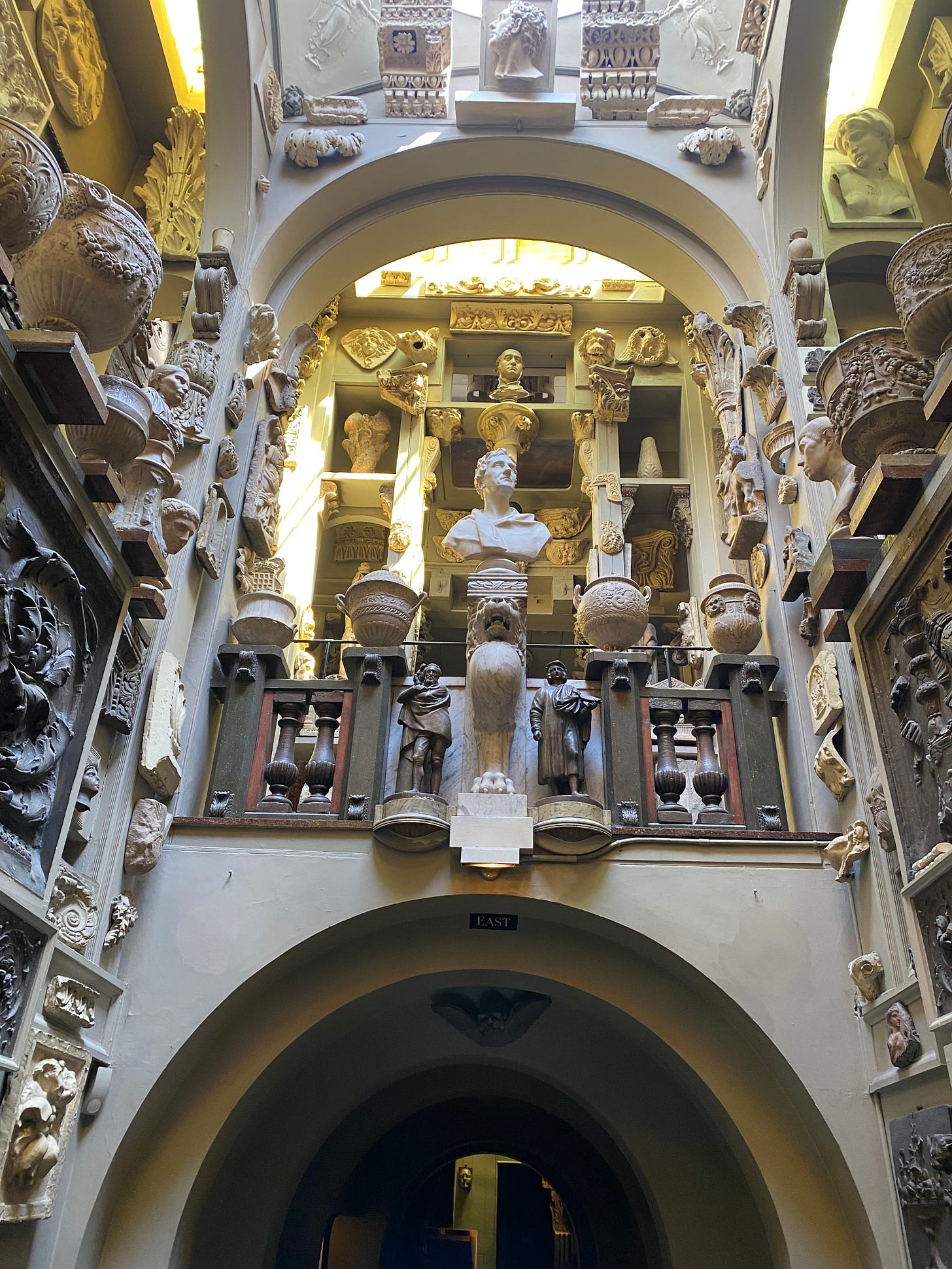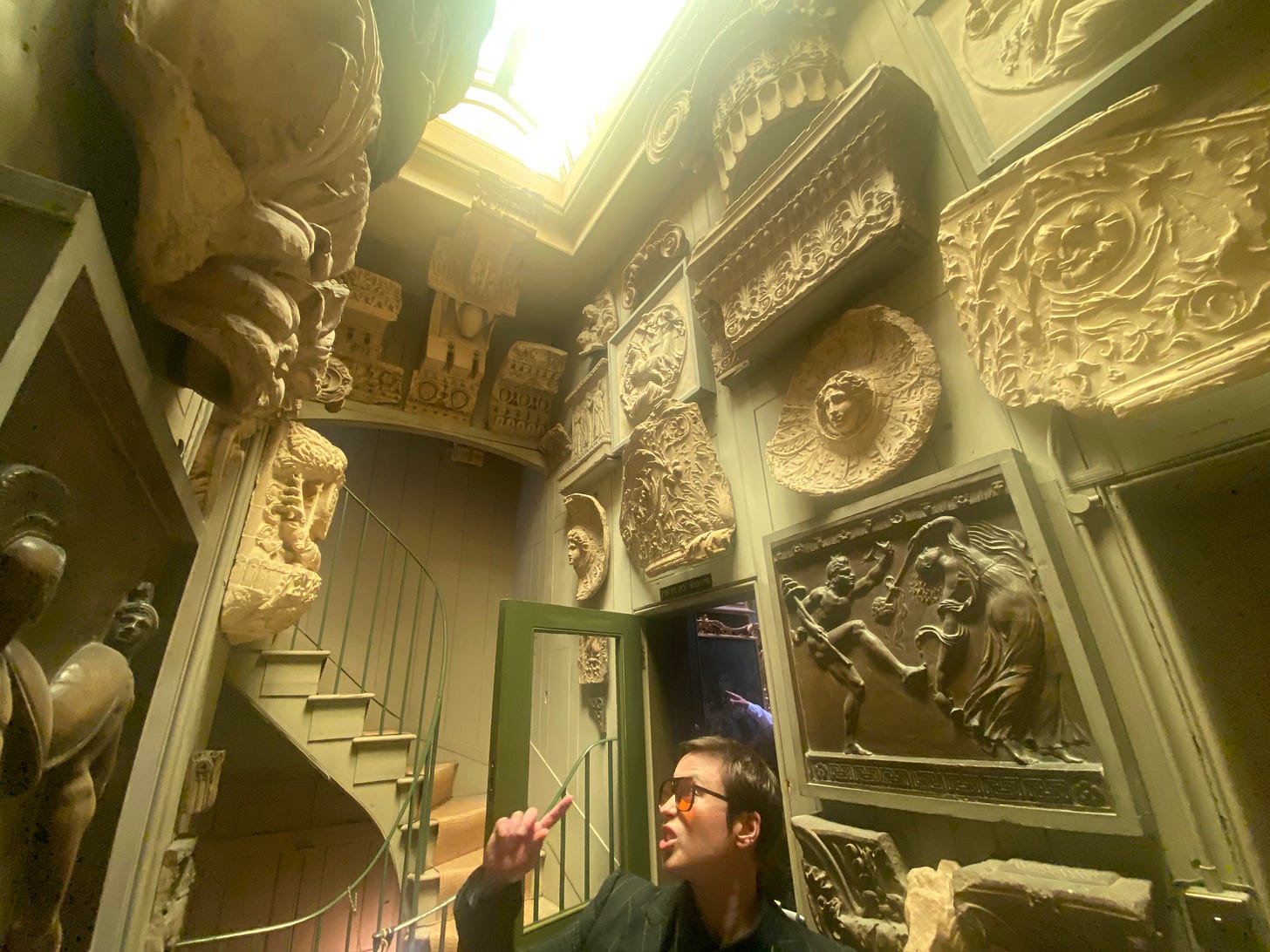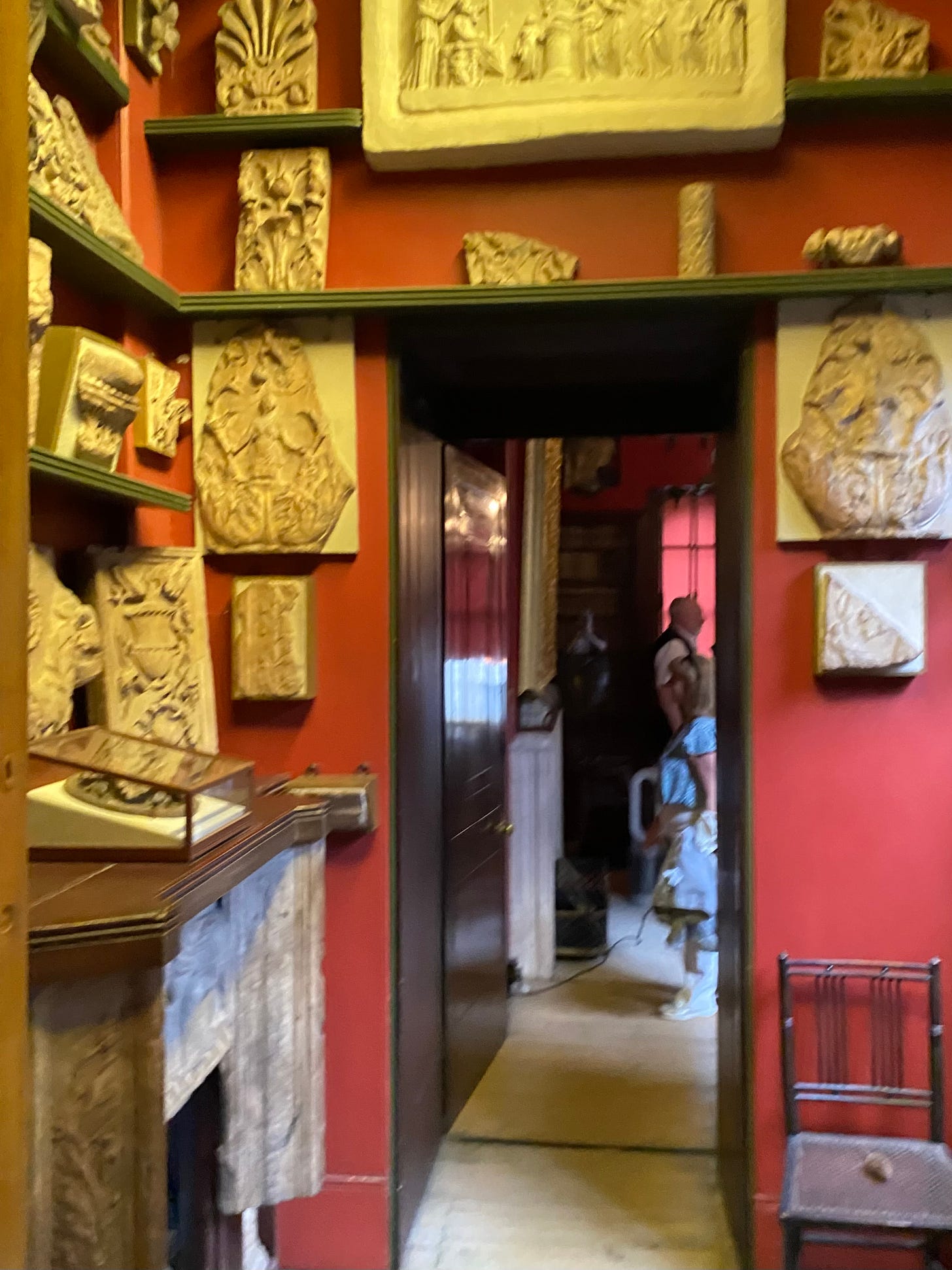A Reflection of the Times: On Empire, Inquiry, and the Architecture of Collection
I had a fine time exploring the Soane Museum. These three connected apartments—transformed into a kind of ‘house museum/archives’—an environment not unlike what I envision one day for the Ontological Museum, if ever I had the time or means to attempt such an ambitious project. It was a lived-in labyrinth: part study, part sanctuary, part reliquary.
What it held was not just stuff, but a worldview. A massive cabinet of curiosities, first established in 1813, that had grown into a sprawling record of empire, intellect, and desire.
This collection—British in origin and sensibility—embodied the plunders of empire, the fervor of science, and the rise of global exploration and shipping. From taxidermied beasts and carved idols to scientific instruments, architectural fragments, and shipping charts, everything here gestured toward a time when to collect was to possess, and to possess was to know.
In such collections, curiosity becomes conquest.
To wander the rooms was to witness a distinctly 19th-century form of knowledge-making, one forged in tandem with colonial expansion. Every artifact spoke of distance—of things brought “home” from elsewhere. Yet the “elsewhere” was never far, only layered beneath glass, pinned to the wall, or mounted on a shelf with an elegant brass label. The world had been miniaturized, categorized, and contained within a private domestic interior.
And it was not merely material fascination—it was aesthetic. The collector’s deep interest in sculptural art and architecture added gravity to the whole endeavor. Stone torsos and friezes were not just trophies but touchstones of civilization, links to classical ideals that helped justify Britain’s civilizing mission. The architecture of the collection reflected the architecture of empire: orderly, enduring, monumental.
At the same time, the fervor of the Enlightenment had not yet burned out. This was a place where science still carried the weight of promise and discovery. Scientific fervor—the belief that nature, humanity, and history could be charted, dissected, and explained—lay beneath every display. Collections like this were not just for pleasure but for proof. They whispered of progress.
Today, we may find ourselves ambivalent in such spaces. They stir admiration, discomfort, nostalgia, and critique in equal measure.
But there is no denying: this collection is a reflection of its time—a time when the British Empire stretched across continents coining the phrase “The sun never sets on the British empire.” Shipping lanes carried more than goods, and the private home could become a mirror of the world.
It is precisely that collision of domestic intimacy and global ambition that makes such a space powerful. It reminds us that history is not stored in books alone, but also in rooms—arranged, dusted, and framed.
Perhaps, one day, the Ontological Museum may grow into its own version of such a space—not to mirror the empires of old, but to question what we choose to collect, and why. Not a museum of dominance, but of resonance. Not a cabinet of plunder, but of presence.






Sorry folks, I accidently misspelled Soane as Sloan for some reason. I have corrected that and noticed I didn't put a link to the website so I added that too!
Well, said! I think artifacts tell their own stories. To me, everything has to have a story unless it is brand new or I made it, and if I made it, I would know its story already, but maybe not. I am writing a novel right now, and I don't know the full story yet!
Ha! Ha! Sasha and Annette!